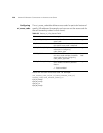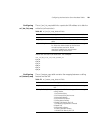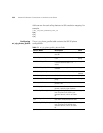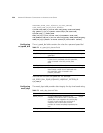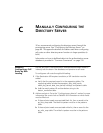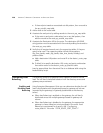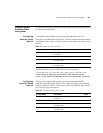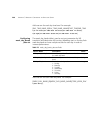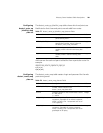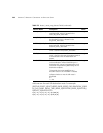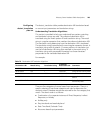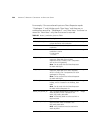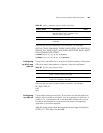
258 APPENDIX C: MANUALLY CONFIGURING THE DIRECTORY SERVER
c If the end point needs an associated out dial pattern, then a record to
the ep_outdial_map table.
3 Add a route to the route table.
4 Associate the end points by adding records to the route_ep_map table.
a If the route to end point combination has an out dial pattern, then
add the record to the route_ep_outdial_map table.
5 Associate the Destination URI to the route. The destination URI (DNIS
string) pattern must be associated with the route by adding the records to
the route_ep_map table.
6 Verify that all required records are in the supporting tables, if they are
going to be used. The supporting tables include the requestors,
day_time_bands, week_day_bands, date_time_bands, holidays, and
patterns table.
a Add a destination URI pattern and route ID to the desturi_route_map
table.
b To black list a specific destination URI, route, end point combination
then add a record to the desturi_route_ep_blacklist table.
Load or append data from these text files to a database table using the
besbulkload.pl script.
Configuring Load
Balancing
The directory servers and gateways work together to balance the call
load. The call load is balanced based on how the directory servers and
gateways are provisioned.
Enabling and
Disabling Load
Balancing
Using Enterprise Management Suite you can determine whether the call
load is distributed across the gateways based on gateway call volume
(reported by the gateways) or gateway (established at the directory
server).
■ When load balancing is enabled on the gateway, the call load is
distributed across the multiple gateways based on gateway call
volume.
■ When load balancing is disabled on the gateway, the appropriate
gateway is chosen based on priority assigned in the route. Load
balancing is provisioned for a route in the “Configuring
route_data.txt” file under “CODE_ROUTE_SORT_POLICY”.



